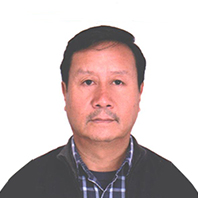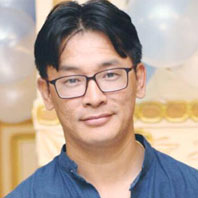Detailed Itinerary
Day 1: Arrival in Kathmandu (1,350m)
Depending on your arrival time, our representative will be at the airport to receive you and transfer you to your booked hotel.Overnight at Hotel Malla.
Meals: None
Day 2: Rest Day In Kathmandu
Reserve day in Kathmandu to make last minute shopping, equipment checking. And visit to Ministry of Tourism for the Expedition permit.Overnight in Hotel Malla.
Meals: Breakfast
Day 3: Drive from Kathmandu to Dharapani (1850m) – 10/12 Hrs Drive
Today we start early morning as we have a long drive to Dharapani which takes approx. 10/12 hrs. Our journey begins through deep gorges as you trace the Trisuli River westwards. We will be passing through the small town of Mugling where the Trisuli and Marsyangdi rivers meet. Approximately after 7 to 8 hours’ drive, we reach foothills around Besi Sahar (760m).We then change our vehicles – Local Jeeps and then further drive to Dharapani which takes another 4/5 hrs on an off-road mountain road.
Overnight in Local Lodge.
Meals: Full board
Day 4: Trek to Koto (2600m) – 6/7 Hrs Trek
Today we will head towards West – setting off to Bagar Chap; an interesting Buddhist Village. As we further head on, we will pass through the scattered pine forest with a scenic view of Mount. Manaslu and Annapurna 2 on the left side. We will stop at Koto for overnight.Overnight in Local Lodge.
Meals: Full board
Day 5: Trek to Dharmashala (3230m) – 6/7 Hrs Trek
After breakfast, we start our trek to Dharmashala leaving Annapurna Circuit valley. We then enter the Naar Phu Valley following the Naar-Phu River. Gradual up and down walk through coniferous forests with a beautiful view of Lamjung Himal on the south; we reach Dharamsala (3230m) where we will stay overnight.Overnight in Local Lodge.
Meals: Full board
Day 6: Trek to Kyang (3820m) – 6 Hrs Trek
From Dharmashala, we trek towards Kyang passing through a small village called Meta. We follow the Phu Khola on a fairly ascending trail to Chyako. From here the trail gets steeper as we head to 'Upper Chyako' and then to Kyang(3800m). Kyang, located above Phu Khola has the remains of the Khampa settlements and is the main winter settlement of the people of PhuOvernight in Local Lodge.
Meals: Full board
Day 7: Trek to Phu Gaon (4200m) – 5 Hrs Trek
Today we will trek to Phu Gaon one of the hidden villages of Nepal, which will take approx. 5 hrs walk. As we ascend from Kyang to Phu Gaon, we can see the prayer flags, Chorten, and Mani walls all along the trekking trail. The remaining afternoon is at leisure to explore this remote settlement.Overnight in Local Lodge.
Meals: Full board
Day 8: Rest Day in Phu Gaon
Reserve day at Phu Village to acclimatized & rest your body. Re-energize your body as we will be going to Himlung Base Camp tomorrow.Overnight in Local Lodge.
Meals: Full board
Day 9: Trek to Himlung Base Camp (4920m) – 5/6 Hrs Trek
Today we head towards Himlung base Camp which will be your home away from home for another 2 weeks. On reaching base camp you are warmly welcomed by our crew members. The base camp lies in a beautiful grassy spot with a waterfall and amazing views all around us.Overnight in Camp.
Meals: Full board
Day 10: Rest Day in Base Camp
You have a rest day in base camp to acclimatize your body, check your climbing equipment. Our Climbing Guides will brief you about the Summit plans and safety equipment.Overnight in Camp.
Meals: Full board
Day 11: Rest Day / Puja at Base Camp
We will offer our prayers to the mountains for the clear weather and safety of all members.Overnight in Camp.
Meals: Full board
Day 12: Hike up to Camp I (5400m) & Return down to Base Camp
Hike up to Camp I (5400m) & Return down to Base CampDay 13: Rest Day at Base Camp
Rest Day at Base CampDay 14: Climb to Camp I And Stay Overnight
Climb to Camp I And Stay OvernightDay 15: Return to Base Camp
Return to Base CampDay 16: Rest Day at Base Camp
Rest Day at Base CampDay 17: Climb to Camp I and Stay Overnight
Climb to Camp I and Stay OvernightDay 18: Hike-up to Camp II (6050m) and return down to Base Camp
Hike-up to Camp II (6050m) and return down to Base CampDay 19: Rest Day at Base Camp
Rest Day at Base CampDay 20: Climb to Camp I And Stay Overnight
Climb to Camp I And Stay OvernightDay 21: Climb to Camp II and Stay Overnight
Climb to Camp II and Stay OvernightDay 22: Summit Himlung Himal (7126m) & Return down to Camp I
Summit Himlung Himal (7126m) & Return down to Camp IDay 23: Return down to Base Camp
Return down to Base CampDay 24: Rest day at Base Camp / Cleaning Up
After the expedition, we pack our bags and clean up the base camp.Overnight at Tent.
Meals: Full board
Day 25: Trek down to Meta (3560m) – 7/8hrs Trek
Today we bid our farewell to our base camp crew members and after breakfast we descend down all the way to Meta which takes around 7/8 hrs walk.Overnight at Lodge.
Meals: Full board
Day 26: Trek to Koto (2600m) – 7hrs Trek
We further descend down to Koto leaving the Naar Phu Valley.Overnight at Lodge.
Meals: Full board
Day 27: Trek to Jagat (1300m) – 7hrs Trek
After breakfast we keep descending down to Jagat which takes approx. 7hrs walk.Overnight at Lodge.
Meals: Full board
Day 28: Jeep drive to Besisahar and then to Kathmandu – 10/12 hrs Drive
From Jagat, we take a local jeep to Besisahar which takes around 4hrs off-road / mountain trail. After lunch, we change the vehicle to more comfortable seat. We then continue driving to Kathmandu which takes around 7/8hrs drive (depending on the road traffic).Overnight at Hotel Malla.
Meals: Breakfast, Lunch
Day 29: In Kathmandu
First hour in the morning, Expedition debriefing will be done at the Ministry. Remainder of the day is at leisure for last minute souvenir shopping.Overnight at Hotel Malla.
Meals: Breakfast
Day 30: International Departure
Depending upon your flight time, you will be transferred from Hotel to airport.The airport time is 3 hours prior to departure time and the hotel checkout time is 12:00PM. In case you are flying late evening and require a half day use of the hotel, you can let us know in order to confirm the room for you.
Essential Info
Visa
Most nationalities require a visa for Nepal, which can be obtained in advance or upon arrival. The current cost of a visa on arrival is- For 15 days Multiple Entry: USD 30.00 Per Person
- For 30 days Multiple Entry: USD 50.00 Per Person
- For 90 days Multiple Entry: USD 125.00 Per Person
1st Queue: Filling the application form. The clients can avoid this queue by filling the online application form (https://online.nepalimmigration.gov.np/tourist-visa) in their home country. A sample of the online application form with the necessary details has been filled (see attached). The clients should put the exact information as seen in the attached file; the hotel name could be different. Once you fill up the form and submit, they will receive another slip (see attached) which they need to print it out and bring along with them.
2nd Queue: Cash Counter. If the clients have online slip beforehand, they can stand directly at the cash counter avoiding the 1st queue. It is advised for the clients to carry the exact visa fee amount (cash) either in US $ or Euro, but not in Nepalese Rupees.
3rd Queue: Immigration. Once the payment is done, the clients need to stand at the Immigration line with the receipt from the cash counter and necessary documents.
Vaccinations
There are no mandatory vaccination requirements. Recommended vaccinations are: Polio, Tetanus, Diphtheria, Typhoid, Hepatitis A. The risk of malaria is present in certain regions only (such as Chitwan); you may wish to consult your GP or travel health clinic for further advice. Dengue fever is a known risk in places visited. It is a tropical viral disease spread by daytime biting mosquitoes. There is currently no vaccine or prophylaxis available for Dengue, and therefore the best form of prevention is to avoid being bitten. We recommend you take the usual precautions to avoid mosquito bites.Most of our trips to Nepal go to high altitudes where there is a risk of being affected by Acute Mountain Sickness. Our itineraries are designed to enable everyone to acclimatize to these altitudes, but you should be aware that it is still possible for you to be affected.
Eating & Drinking
Breakfast is included throughout the trip and all meals are provided while camping (all breakfasts, 3 lunches and 2 dinners).Breakfast is included throughout the trip and all meals are provided while trekking + camping. On trek the breakfast will be a set menu usually consisting of porridge and toast. Any additional items that are not included in the set menu should be ordered and paid for separately. We do not include lunch and dinner in the tea-houses, allowing you to choose what you want to eat and when. Although most lodges have almost identical menus, they are reasonably extensive and offer a varied selection, ranging from traditional Nepalese dhal bhat to pizza and apple pie.
Although meat is available in the teahouses, we advise against eating it on trek. The meat has often been carried in the heat from lower altitudes for several days before reaching the lodges, and can cause stomach upsets or illness. Germs can also be spread by handling dirty money - we recommend using hand sanitizer.
If you buy imported food and drink whilst on trek you will spend more than the suggested amount.
Drinking Water
Staying hydrated is important when undertaking any physical activity but particularly so at altitude where it is generally recommended to drink at least 3-4 litres per person per day.
We strongly encourage you not to buy bottled water on trek as this contributes to the growing problem of plastic pollution in Nepal's trekking areas.
All teahouses will provide cold water free of charge, if requested. Although this should not be drunk untreated, we recommend that you bring a reusable bottle with a wide opening (Nalgene or similar) with you and use a SteriPEN to treat it with. A SteriPEN is a handheld UV water purifier – small, lightweight and battery powered so easy to pack for a trek. In Nepal's trekking regions most of the bottled water isn't strictly 'mineral water' anyway but is UV treated, so it's exactly the same technology. It's quick to use, far more effective than purification tablets, and the water is ready immediately. It's fine to use a SteriPEN on non-boiled water so long as it isn't cloudy or full of sediment (which is uncommon in these regions).
SteriPENs are widely stocked on Amazon, outdoor shops and other online retailers; look for the latest models but avoid USB charging ones. Better still, a SteriPEN will pay for itself over the course of the trek and you won't leave behind a single plastic bottle – you will end up spending the same or even less than you would on bottled water, plus you can keep it for future trips.
If you prefer not to invest in a SteriPEN, the teahouses also sell boiled water for approx. Rs150-300 per litre (the price increases the higher you trek) which should not require treating. This is also perfect for a bedtime refill as it can double up as a hot water bottle.
While camping boiled water is supplied for drinking.
Weather
The main trekking season in Nepal is from October to mid-May when daytime temperatures at most altitudes are generally comfortable for walking, the sky is clear much of the time and rain and snow are occasional occurrences. Daytime temperatures will vary from 15ºC to 35ºC in the Kathmandu Valley to around 10ºC at 3,600m and progressively lower the higher we go.Different seasons offer different advantages for trekking.
Post Monsoon/autumn: Mid-September to November. This is the main trekking season in Nepal. Day temperatures in Kathmandu are approximately above 20ºC. Skies are usually clear and days on trek are sunny and mild with clear mountain views. At the highest altitudes although the days can be nice and sunny the temperatures can drop to 10ºC and much lower. Nights will be colder with temperatures dropping as low as minus 10ºC and lower at the highest altitudes.
Pre monsoon/spring: March to May. Both day and night temperatures will be warmer in general but haze will often build up in the afternoons. It is very hot in the lowlands and temperatures rise to 35ºC in Kathmandu. Flowers bloom in this season and this is one of the reasons people chose to trek in spring.
Snow can be expected on any departure, usually at the higher altitudes. Summit day will be a very early start (usually about 2am) and will be extremely cold. Although mostly it is calm and clear on summit day the mountain does occasionally get high winds. You need to be equipped for temperatures as low as minus 25ºC plus wind chill on summit day.
Please remember that in any mountain area the weather is never wholly predictable and you should be prepared and equipped to deal with any differences in weather beyond the conditions described above.
Fitness Level and Technical Ability
Fitness Level and Technical Ability Climbers wishing to join this expedition must already be experienced with rock and ice climbing and have successfully completed previous climbs at high altitude, over 4500m (15,000ft). This expedition requires excellent levels of fitness to endure the extreme conditions of summiting big peaks. To prepare for this, climbers should undergo a regular and strenuous exercise regime for at least 6 months to build their strength, stamina and endurance.Our Specialist
How to Book
We like to offer a personalized service to our clients – you can contact us by email or telephone any time. Please let us know if you wish to chat with us via Skype, Whatsapp or Viber and we can connect with you at a time that is suitable for you and us, depending on where you are in the world and the timezone you are in.
Check availability:
Go online to check availability, or contact us by phone or email.
Secure your place
You can provisionally hold a place on this trip, usually for between three and seven days.
To Book
Let us know which trip you would like to join. For trips that require a certain level of skills and prior experience, we will ask you to provide us with details so that we know the trip is the right one for you.We will send you a form for you to complete your personal details, medical and fitness information. We will also send you our bank details for you to make payment – we will tell you how much and how to pay.
When you are ready, simply complete the form and send it back to us and let us know once you have deposited the relevant funds into our bank account.
We will send you back a written acknowledgement and other information about your trip such as a gear list and any other relevant information specific to your trip.
Of course, at any time leading up to your trip, if you have any questions, please do not hesitate to contact us as we will want to give you as much information as you need so that you can feel comfortable and excited about your forthcoming adventure.
We look forward to having you on an adventure with us!



